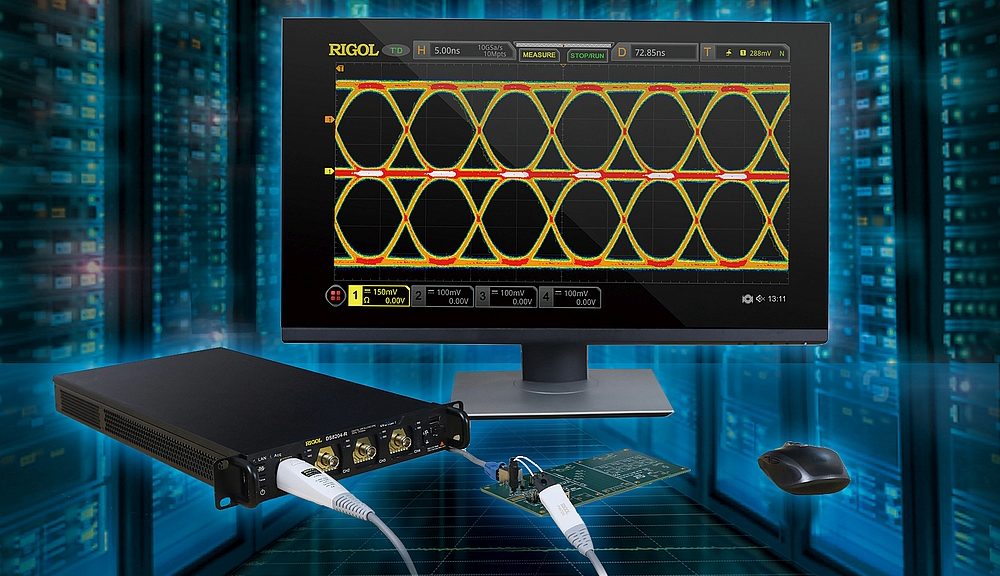- Rigol Technologies presents the new DS8000-R series oscilloscopes integrated in a faceless module occupying half a rack in width and 1U in height.
- These modular oscilloscopes, equipped with four analog inputs, cover a frequency band up to 2 GHz.
- These instruments can be used as stand-alone instruments or can be deployed in cascade, within a test bench or a multi-channel acquisition system, in order to have a larger number of channels available.
The DS8000-R series oscilloscope modules offer, depending on the model, analog bandwidths of 350 MHz, 1 GHz and 2 GHz. The signals are sampled at a maximum rate of 10 GS/s. Each of the four channels has a memory depth of 500 Mpts as standard. A synchronous triggering system allows several modules to be linked to extend the acquisition capacity to 512 channels. The high-speed interface of the synchronization module allows data transfer of up to 10 GB/s via the 10 GE SFP+ optical interface.
These oscilloscope modules are equipped with 4 analog inputs, 1 external trigger input and 1 output for the generation of arbitrary waves (25 MHz). They can be used on a laboratory bench or installed in the cabinet of an automated test system using a rack mounting kit.
The DS8000-R oscilloscope modules can be driven by Rigol’s Ultradaq Lite software to control multi-channel acquisition and display waveforms. Digital tools are available for real-time eye diagrams and jitter analysis. Various functions for triggering, FFT analysis over 1 million points, mathematical calculations, mask test and power analysis are also available.
These compact oscilloscopes (214 mm wide × 43 mm high × 478 mm deep), include a counter, totalizer, voltmeter and arbitrary function generator. Options for analyzing serial bus protocols (decoding/triggering) are available. They are equipped with USB Host, USB Device, HDMI, LAN, 10 GE SFP+ and TRIG OUT interfaces.
Some options such as bandwidth extension and serial bus decoding can be activated by a simple software update. This makes it possible to upgrade the instrument according to the needs of the application.






